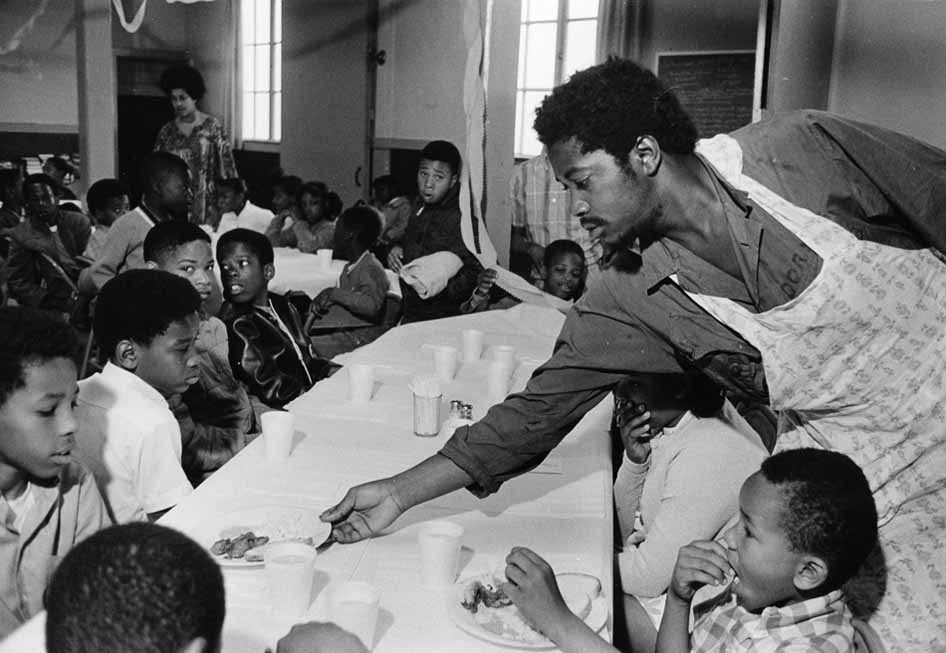

Last month, Social Finance celebrated Black History Month with a campaign across our offices, which included museum visits and walking tours to historic sites honoring Black Americans; hosting a guest speaker from The Reparations Finance Lab and a media/book club discussion; and an employee-contributed daily email campaign to honor and uplift the contributions and achievements of Black communities in the United States. This article is an extract from one of those daily emails.
Black cooperatives, collectives, and mutual aid organizations have a storied history in America. These organizations started as the only method for African slaves to come together and organize themselves in a society that provided them with no sources of formal recognition, but they have continued to this day as a tool to fight persistent inequality and racism in our social and economic institutions.
In the Antebellum South, both free and enslaved Blacks pooled their assets to pay for burials, purchase land, support the sick, and even buy their own freedom. The Underground Railroad is the most famous example of these types of pre-Civil War mutual aid societies. Post-Civil War, the exclusion of newly freed slaves from most formal organizations led to the creation of more formal cooperative associations. The largest was the Colored Farmers’ National Alliance and Cooperative Union, which formed in 1877 following the exclusion of Black farmers from agricultural organizations such as the Southern Farmers’ Alliance. By 1890 the cooperative had 1.2 million members, providing training on better farming techniques and practices as well as discounted purchasing exchanges for members. Eventually, the organization declined following a failed labor strike and discord within the cooperative for not taking on a more activist mission focused on political and social equality.
At the height of the civil rights movement, Black cooperatives and collectives operated as a backbone of the movement. The Freedom Quilting Bee formed in 1966 in Alberta, Alabama as an artist cooperative of skilled quilters. Their artistry quickly gained national recognition. By 1968 they had bought 23 acres of land for their sewing factory, and by 1972 they had contracts for national distribution with organizations as large as Sears. The artist cooperative was closely connected with the Quilters of Gee’s Bend, Alabama, whose quilts have been displayed at the Whitney Museum and the Houston Museum of Fine Arts.
The Black Panther Movement was another organization that organized around the principles of mutual aid, including working to provide collective housing, operating cooperative bakeries, and running a free lunch program.
Today, the legacy of Black cooperatives lives on in organizations across America. These organizations are especially vital in the home care and agricultural industries, where workers had been explicitly excluded from the New Deal due to pushback from racist southern legislators. Based in Mississippi, Alabama, and Georgia, The Federation of Southern Cooperatives is a nonprofit cooperative association of Black farmers, landowners, and cooperatives that represents 20,000 individuals through 75 cooperatives. The main goals of the Federation are:
- Cooperative economic development: helping to organize and maintain cooperatives;
- Land retention: helping to save and expand Black-owned land; and
- Advocacy: pushing for programs and policies that strengthen the movement.
Prior to Social Finance, I worked at the ICA Group, where we worked to strengthen and grow worker-owned cooperatives in the home care industry by providing industry-specific research as well as financial and operational advisory services. As part of that work, I had the pleasure of supporting and learning from cooperatives with a high percentage of Black worker-owners, including Cooperative Home Care Associates and Cooperation Jackson.
- Cooperative Home Care Associates: a cooperative home-care agency based in the Bronx, and is the largest worker cooperative in America, with 2,300 employees and over 1,000 worker-owners—the vast majority of whom are women of color.
- Cooperation Jackson: a recently formed federation of cooperatives based in Jackson, Mississippi that aims to create a federation of local worker cooperatives, a cooperative incubator, a cooperative education and training center (the Kuwasi Balagoon Center for Economic Democracy and Development), and a cooperative bank or financial institution.
For more information, Collective Courage: A History of African American Cooperative Economic Thought and Practice provides a comprehensive history of Black cooperatives in America.
Photo: Black Panther’s free breakfast program in Oakland, CA. Photo courtesy of Shareable.
Related Insight

Reflecting on our DEI Journey
In 2022, we launched and advanced multiple DEI workstreams tied to our DEI Action Plan.